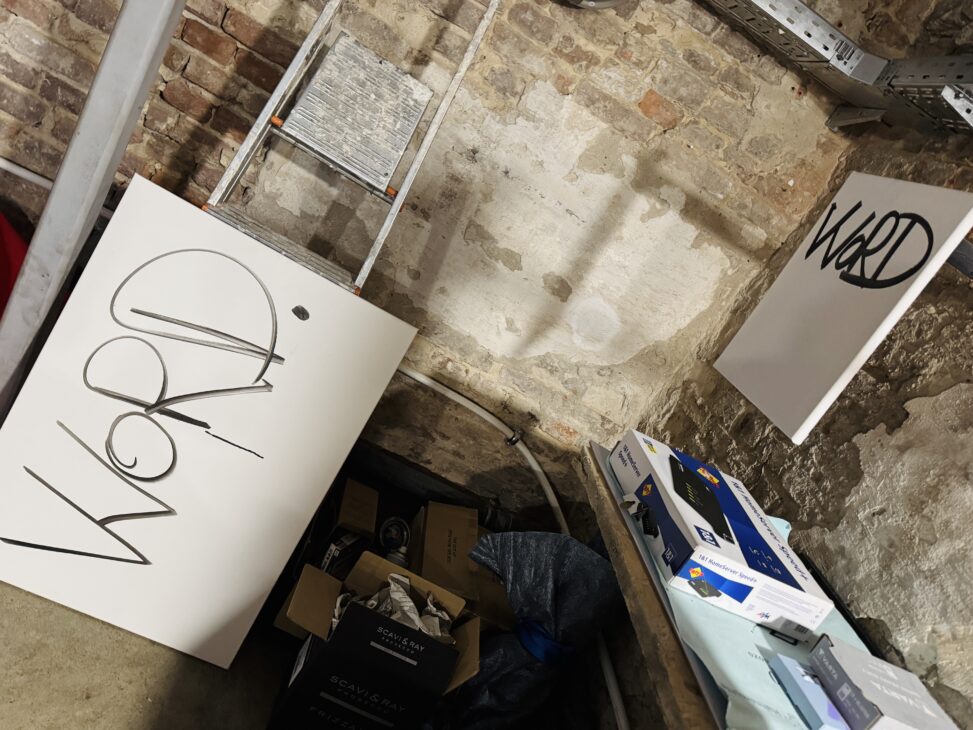.
.
Ich starre auf mein selbst gezeichnetes Bild, bin tief bewegt und frage mich warum.
Es ist weder Kunst, noch schön.
Ich halte es in der Hand, ganz behutsam. Als wäre der Canvas zerbrechlich und aus Glas.
Ich halte es in der Hand, voller Ehrfurcht. Fast als wäre es ein heiliges Relikt.
“Ich kann nicht malen”, sagte eine Person in dem Zeichenworkshop vorhin.
“Warum?”, antwortete die Leiterin motivierend euphemistisch “du tust es doch gerade schon.”
Wenn wir davon sprechen etwas nicht zu können, meinen wir im Allgemeinen dass wir kein TALENT dafür haben. Kein Talent dafür ein für andere ansprechendes, kunstvolles Ergebnis oder End-PRODUKT herzustellen.
Und so ist das quasi auch mit meinem Bild, dem, dass ich gerade erstaunt in den Händen halte.
Es steckt viel von mir darin.
Es ist mutig sich mit etwas zu zeigen, dass man nicht kann.
Etwas zu tun, in dem man wirklich schlecht ist.
Sich damit zu zeigen und vielmehr noch – es zu genießen –
nicht unbedingt das “schlecht darin sein”, aber den Prozess –
nicht unbedingt das Ergebnis, aber das, wofür es steht.
Es ist 22 Uhr Nachts, nach einem langen Sonntag voller Kreaturen und Kreationen und neuer Experimente, stehe ich auf dem Parkplatz im Auto vor der Wohnung und sammle alles ein, was ich mit hochtragen möchte.
Unter anderem diese klitzekleine Leinwand.
Mein Bild aus dem Workshop von vorhin.
Ich starre auf mein Bild, bin tief bewegt und frage mich warum.
Es ist weder Kunst, noch schön.
Gurdjeff, ein realisierter Meister, Erleuchteter, großer Esoteriker, Schriftsteller, Choreograph und Guru an dessen Sacred Dances ich mich bereits versuchte, spricht von der „objektiven Kunst“.
Dies ist Kunst, die nur ein Künstler erschaffen kann, der eine gewisse Bewusstseinsstufe erlangt hat, subjektiven Einflüsse beim Erschaffen seiner Kunst vermeidet, objektive Prinzipien durch seine Kunst widerspiegelt.
Seine Kunst besitzt dann „Seele“.
Da Vinci soll dazu gehören.
Empfindung, Gedanken und Stimmungen kontrollieren und beherrschen ihn nicht.
Es geht darum, Kunst zu schaffen, die zur Vervollkommnung der Menschheit beiträgt.
„Man muss ein Mensch werden, bevor man ein Künstler werden kann.“
Hier stehe ich also vor meinem Auto und halte meine äußerst subjektive Kunst in den Händen. Meinen Versuch der Menschwerdung.
Kunst hat nicht nur ein ästhetisches oder didaktisches Ziel, sondern darüber hinaus ein schöpferisches: ihren Lesern eine reale und zugleich erhellende Erfahrung zu bieten. Große Literatur ist, kurz gesagt, eine Einführung in die Wahrheit.
Katherine Mansfield
In vier Felder sollten wir den Canvas aufteilen, unten rechts das Thema und die Aufgabe: “Draw something that makes you feel alive.”
Statt etwas zu zeichnen, dass mich alive fühlen lässt, spiele ich zunächst erst einmal ein wenig mit dem Wort FEEL herum.
Ich zeichne es mit blauer Farbe auf die Leinwand
viele Male
FEEL FEEL FEEL
Buchstaben auf der Leinwand …
feel
feeling
fell
fall
falling kommt dann irgendwann.
Falling… das g fällt dann plötzlich auch hinunter, und zwar die Kante entlang an den Rand wo der Canvas gespannt ist und da prangt es nun – das g von Falling.
Das gefallene g.
Knallrot.
Hat sich so ergeben.
War nicht geplant.
Genau wie das verwischte F, von feel, dass dann von allen als großer Kunstgriff erkannt wird, dabei habe ich es nur aus Versehen verschmiert.
Ich frage mich wie oft so ein Missverständnis, so eine Fehl-und Überinterpretationen in der Geschichte der Kunst schon der FALL war.
Oh da ist es wieder Fall. Falling.
“Heute fragt man ja nicht mehr, was will uns der Künstler damit sagen, sondern: Was macht das Bild mit mir?”, sagt Hannelore, meine 75 jährige Vertraute und Freundin.
Gut so, denn sonst müsste ich jetzt erklären was ich mit meinem verschmierten baby-wasser-blauen F ausdrücken wollte.
Mein herabstürzendes g wird auf jeden Fall als dadaistisch erkannt.
Find ich super. Klingt super. Nehm ich.
Und bin ganz stolz, dass ich etwas kreiert habe, das etwas IST.
Nämlich dadaistisch, was ja bekanntlich eigentlich NICHTS sein will.
Ich schaue auf mein Bild und ich bemerke, wann immer ich male, bin ich sofort wieder 6 Jahre alt und dann sind da Farben. Wie auf einem psychedelischen Einhorn-Trip für Kinder.
Dann sind da ganz viele bunte Farben. Dann bin ICH voller Farbe.
Ich erinnere mich an den Abend mit Juliane Burbaum und ihrem SEELENKONZERT, das ich vor einigen Jahren besuchte.
Du setzt dich vor ihr Klavier und sie schaut dich einfach nur lange an.
Ihr haltet Hände.
Sitz voreinander schaut euch in die Augen…
und dann… dann sitzt du da und sie spielt dir dein Lied, deinen Song, deine Melodie.
Sie spürt ganz tief in dich (und sich) hinein, weil sie es kann.
Und dann erklingt es. Vor all den anderen Menschen im Saal:
Deine Melodie. Der Klang deiner Seele.
Privater und intimer kann kaum etwas sein.
Und als sie damals meine Melodie spielte, war auch die so voller Freude und Farbe. So albern und fröhlich und bunt. Wie jetzt dieses Bild hier.
Ich schaue ich auf mein Bild und sehe nur bunte Farben. Bunte Farben und albern und fröhlich again.
Ich sehe zwei kleine Enten in gelb, die auf dem großen blauen F von feel schwimmen, weil die Linie vom F ganz dick und breit ist und aussieht wie Wasser. Wie ein kleiner See.
Und auf einen See gehören natürlich Enten!
Alle meine Entchen.
“Irgendwo tief in mir bin ich ein Kind geblieben”, sang Peter Maffay in seinem Album die Reise zur Vernunft 1983.
Irgendwo tief in mir
Bin ich ein Kind geblieben
Erst dann, wenn ich’s nicht mehr spüren kann
Weiß ich, es für mich zu spät
Zu spät
Zu spät
Und eine andere Frage taucht in mir auf: Warum hängen wir uns voller Stolz und ganz selbstverständlich die Zeichnungen unserer Kinder an die Kühlschrankwand, aber unsere eigenen nie? Warum schämen wir uns dafür, wenn wir als Erwachsene nicht malen können?
Dieser Zeichenworkshop war „deeply transformativ“, nicht weil die Leiterinnen große Vorbilder oder Meister_innen al’a Gurdjeff waren.
Sondern weil ich KEINE Kunst geschaffen habe. Nicht mal subjektive.
Weil ich NICHT gemalt habe. Ich habe erfahren.
Ich habe nichts produziert – weder für andere noch mich selbst.
Statt dessen habe ich mich voll und ganz auf den Prozess eingelassen.
Nicht auf das Ergebnis sondern den Prozess.
Und zwar in seiner Ganzheit und Fülle, mit allen Sinnen und offen und neugierig wie ein Kind.
‚Lasst uns äußere Dinge tun; innere Dinge sind zu schwierig.‘
Gurjeff.
Wann immer ich die Farbe fühlen wollte, tauchte ich die Finger in das Farbtöpfchen ein,
die Fingerspitze des rechten Zeigefingers ganz tief in die kühle zähflüssige latexhafte Masse.
Und schaute dabei zu wie mir die blaue Farbe langsam von den Fingerspitzen tropfte.
Mein Finger fungiert dann als Pinsel, die Linien auf dem canvas werden dadurch zu grob, zu groß, zu flächig. Von allem zu viel. So wie ich manchmal.
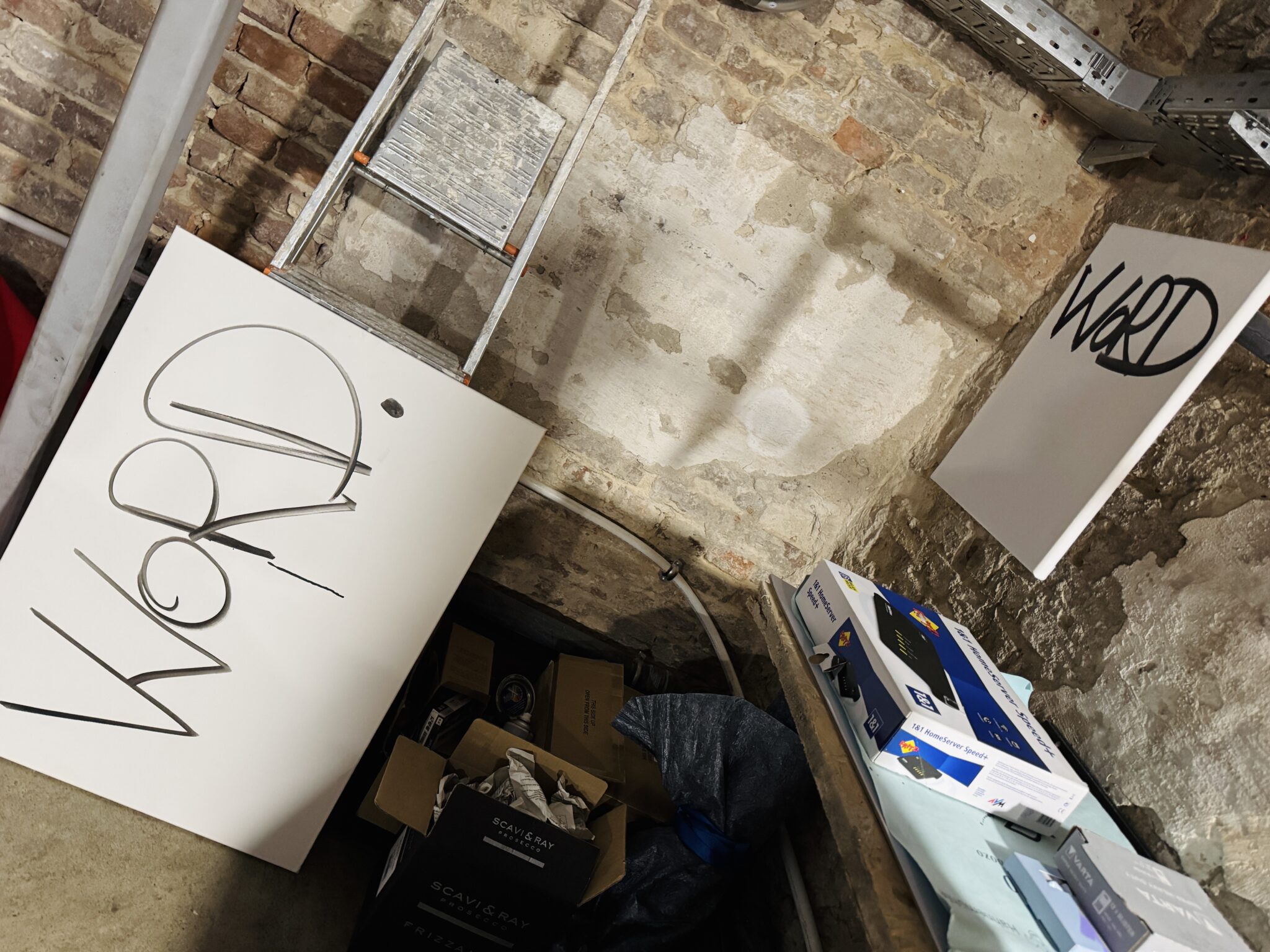
Dafür die Erfahrung:
Wie fühlt sich Farbe auf der Fingerkuppe an?
Wie fühlt es sich an, wenn man mit dem Farb-Finger über den Canvas streicht?
Ich lerne, manchmal braucht es keinen Guru, kein Vorbild.
Und:
Das Ergebnis muss auch nicht immer GUT sein – nur richtig.
Den Spruch und die Erkenntnis habe ich geklaut, um ehrlich zu sein.
Dies sagte eine liebe Freundin von mir einmal in einem ganz anderen Kontext.
Es ging damals um den Fall der Fälle, dass sie bestimmte Ziele im Leben eventuell nie erreicht. Sie oder auch ich nicht.
Und, dass sie für sich nun weiß:
“Ich muss nicht fertig werden, vollendet sein, ankommen (wo auch immer). Mir keinen Stress machen, dass ich es (in diesem Leben) nicht mehr schaffe. Solange jeder Schritt, den ich tue harmonisch, integriert und damit “richtig” ist.”
Und so war der Workshop in gewissem Sinne nicht gut, aber sehr, sehr richtig.
Mein „nicht zeichnen können“, meine “Unfähigkeit”, mein mangelndes Talent hat mich befähigt. Weil ich mich vom Ergebnis loslösen konnte.
Und das FEEL aus FEELING erfahren konnte.
Ich steige aus dem Auto.
Mit meinem kleinen (Kunst-)werk in der Hand.
Ich trage es ganz behutsam die Treppe hoch.
Fast wie ein heiliges Relikt. Kostbar, Behutsam, zart. Fast schon liebevoll gehe ich damit um.
Als wäre es zerbrechlich.
Es kommt nicht an die Kühlschrankwand.
Es kommt direkt über die Couch!
Ein kleiner Ehrenplatz.
Kleiner bunter Schandfleck, der keine Schande ist.
Ein weiteres gemaltes Bild von einem Kind.
(M)einem inneren Kind.
Ich starre auf mein Bild, bin tief bewegt und WEISS jetzt warum.
Es ist weder Kunst, noch schön.
Ich halte es in der Händen wie etwas das zerbrechlich und kostbar ist.
Weil ich zerbrechlich und kostbar bin.
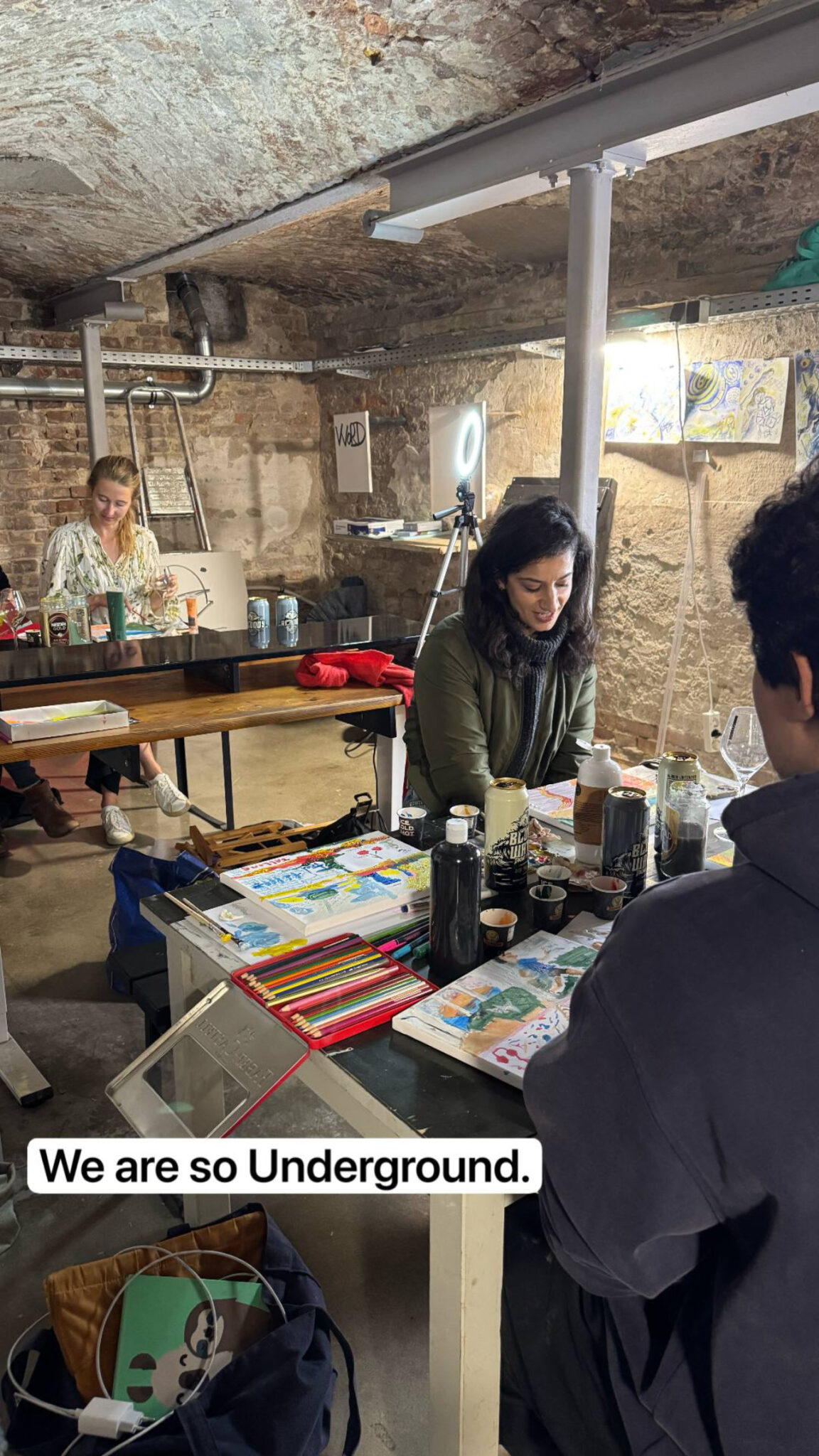
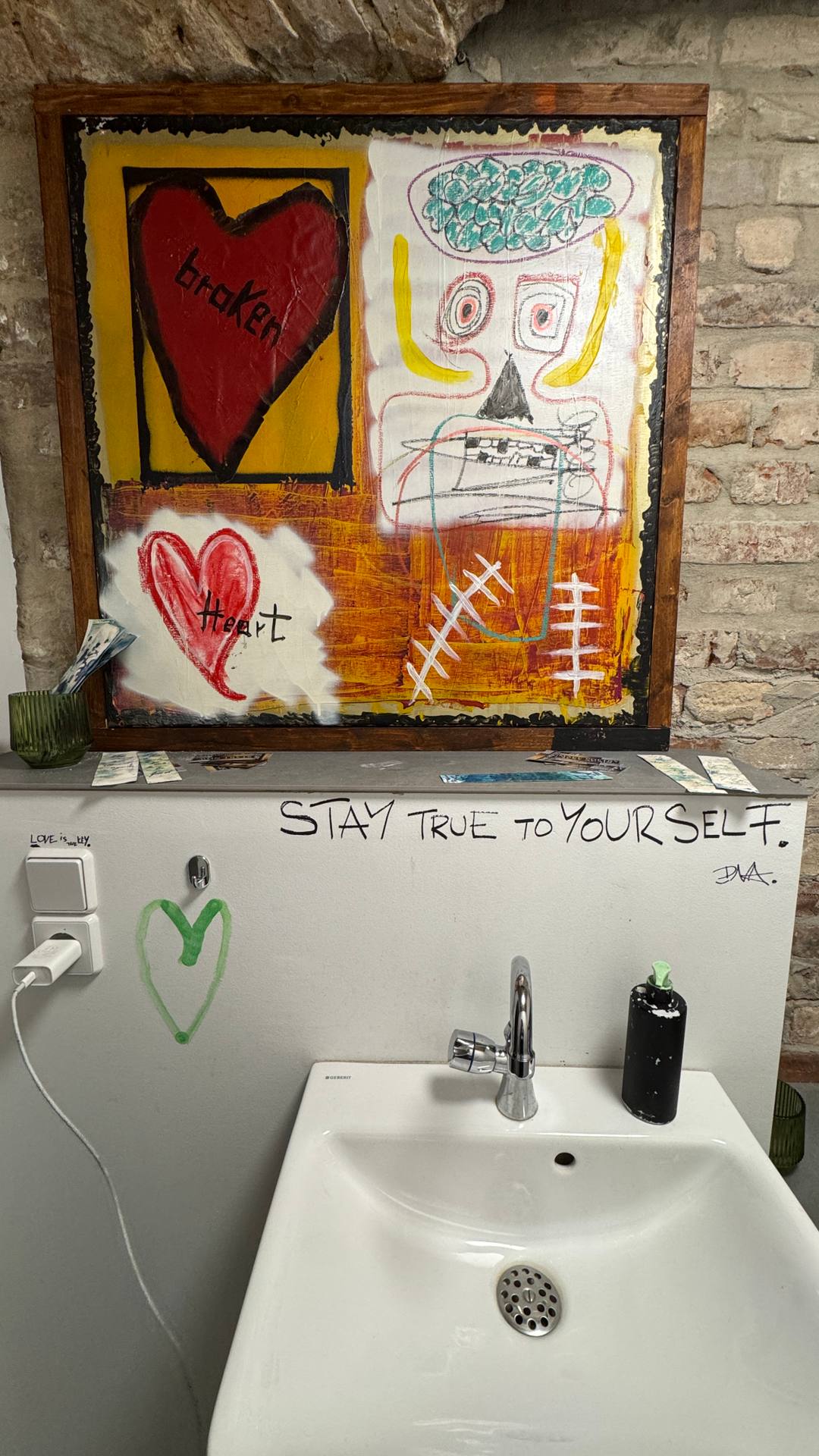
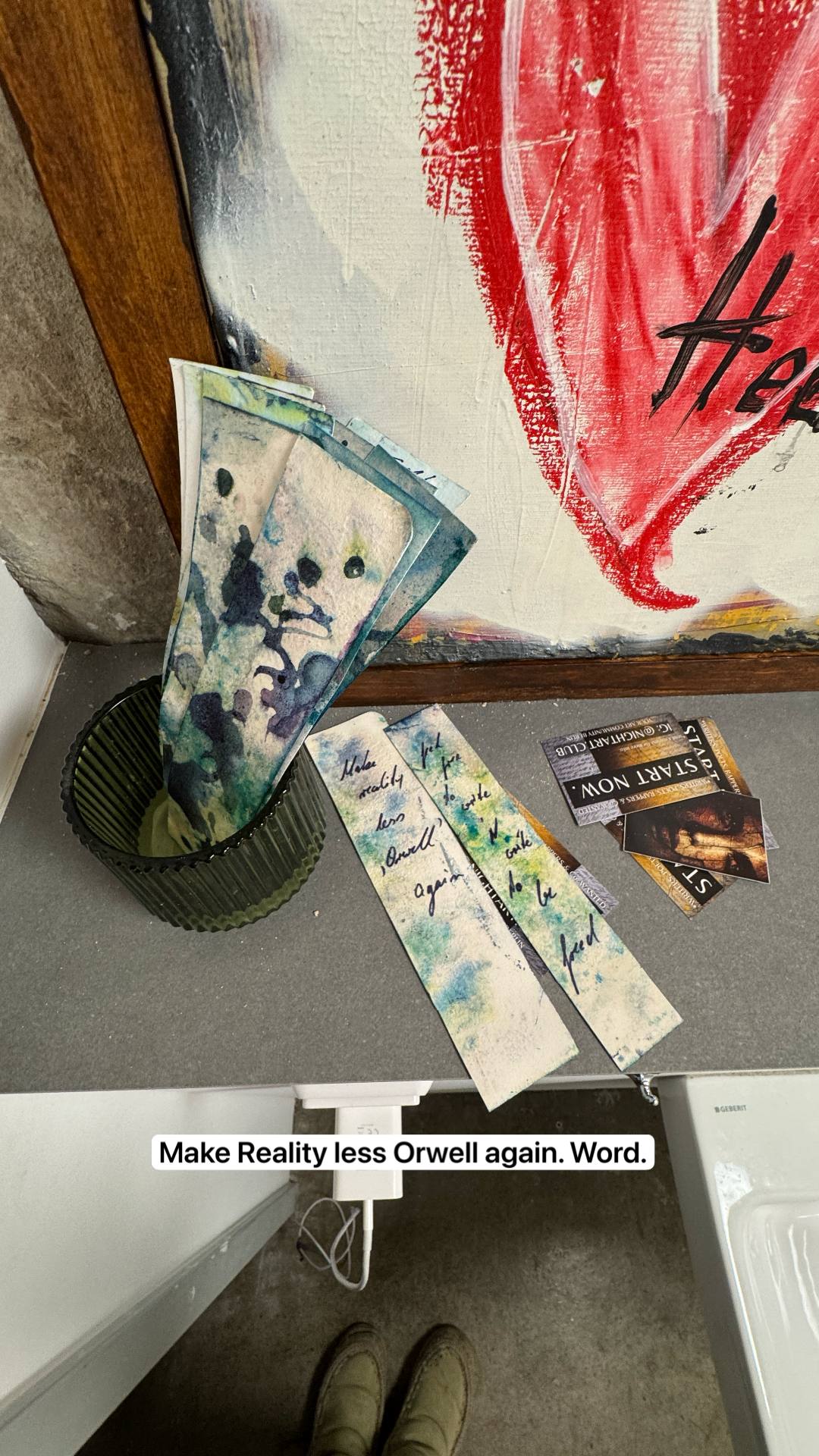
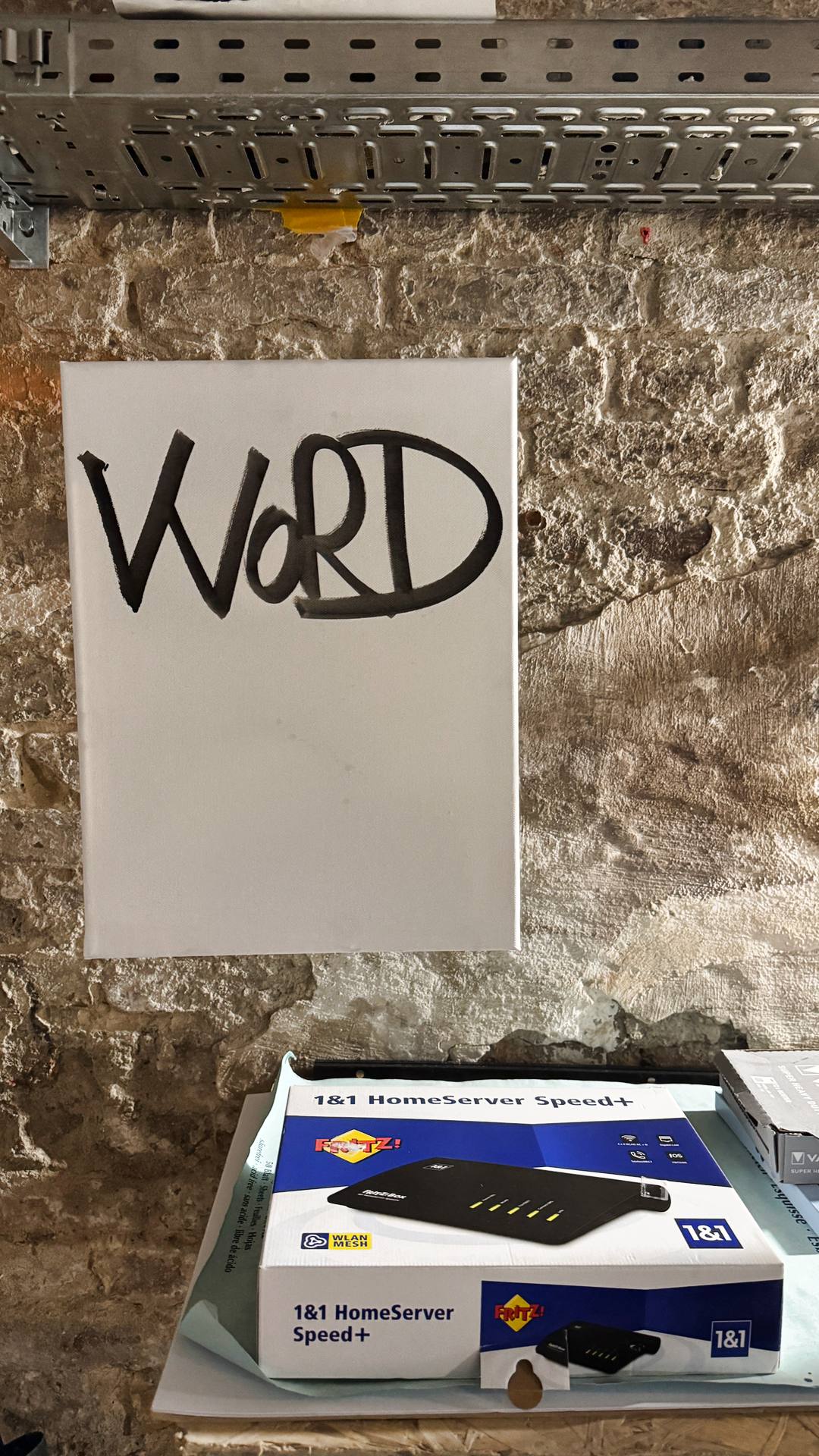

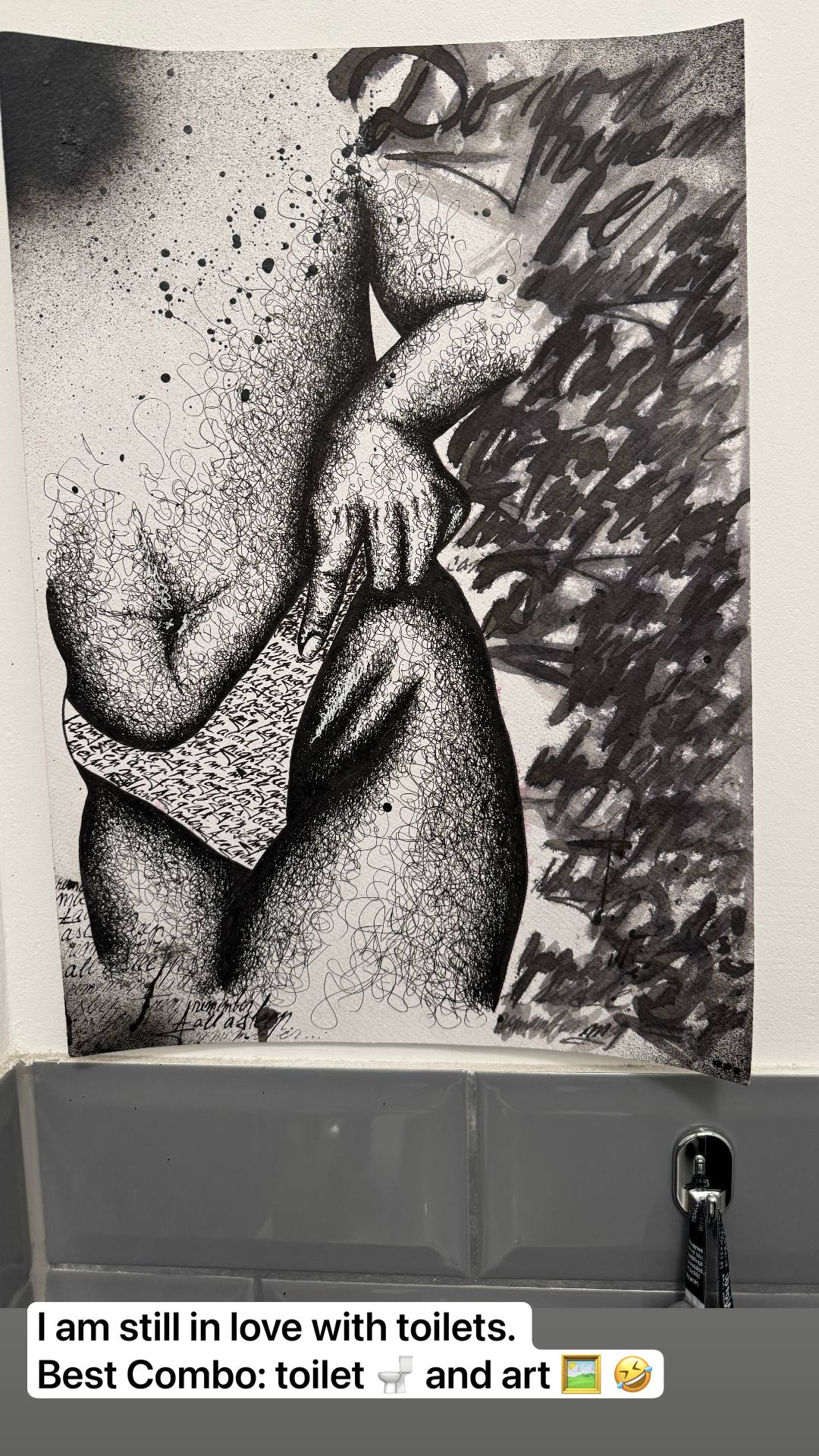
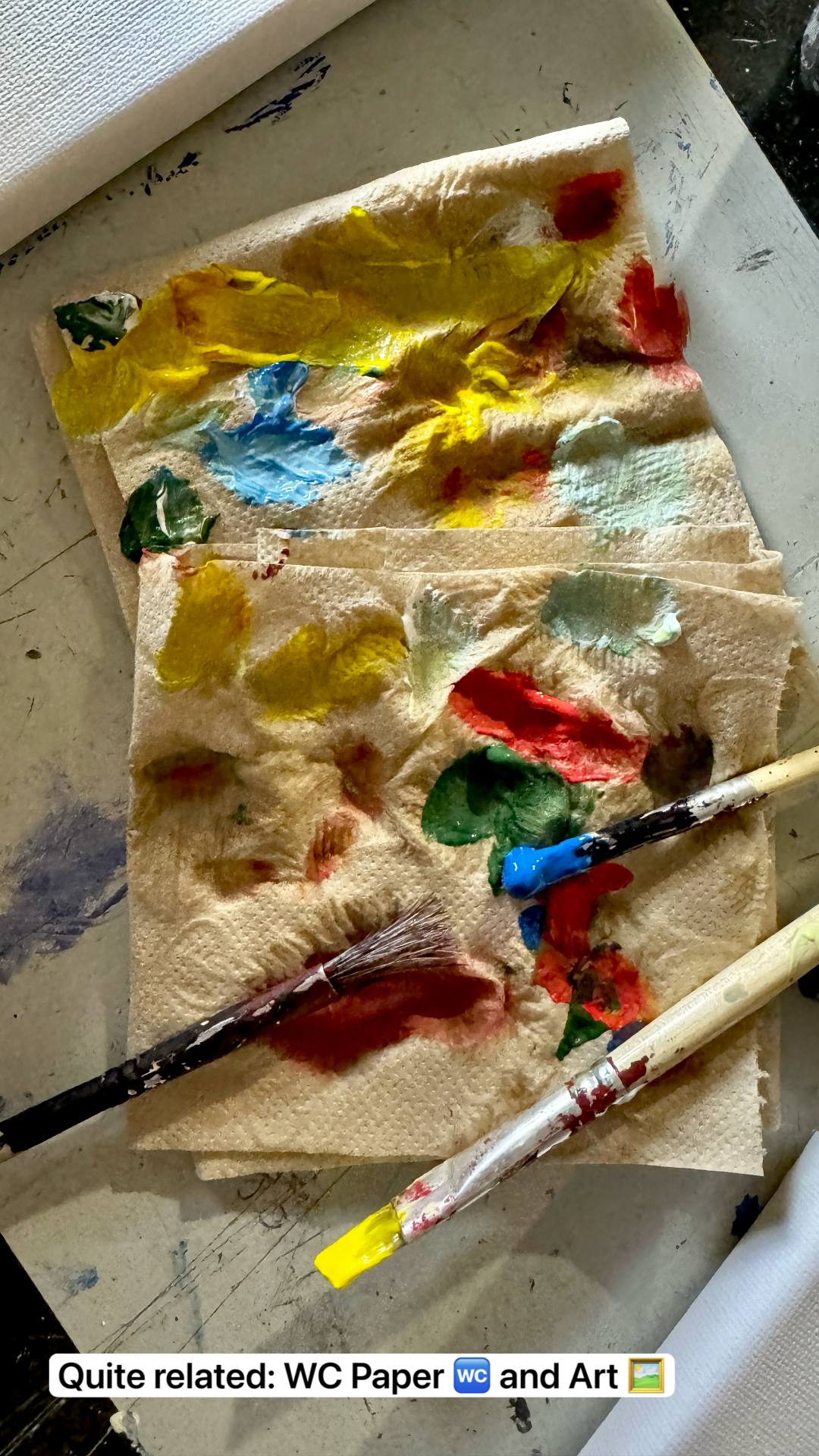
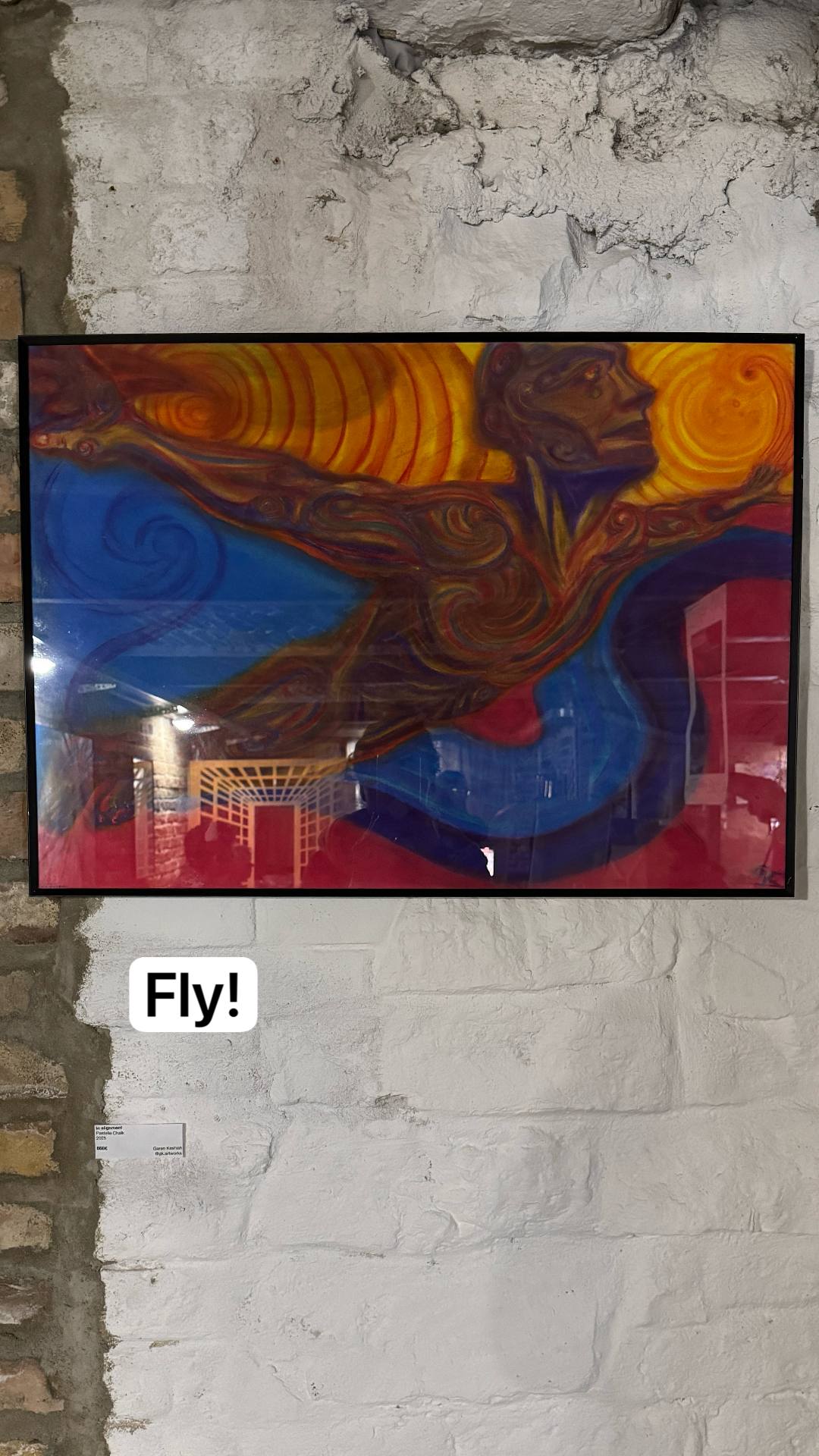
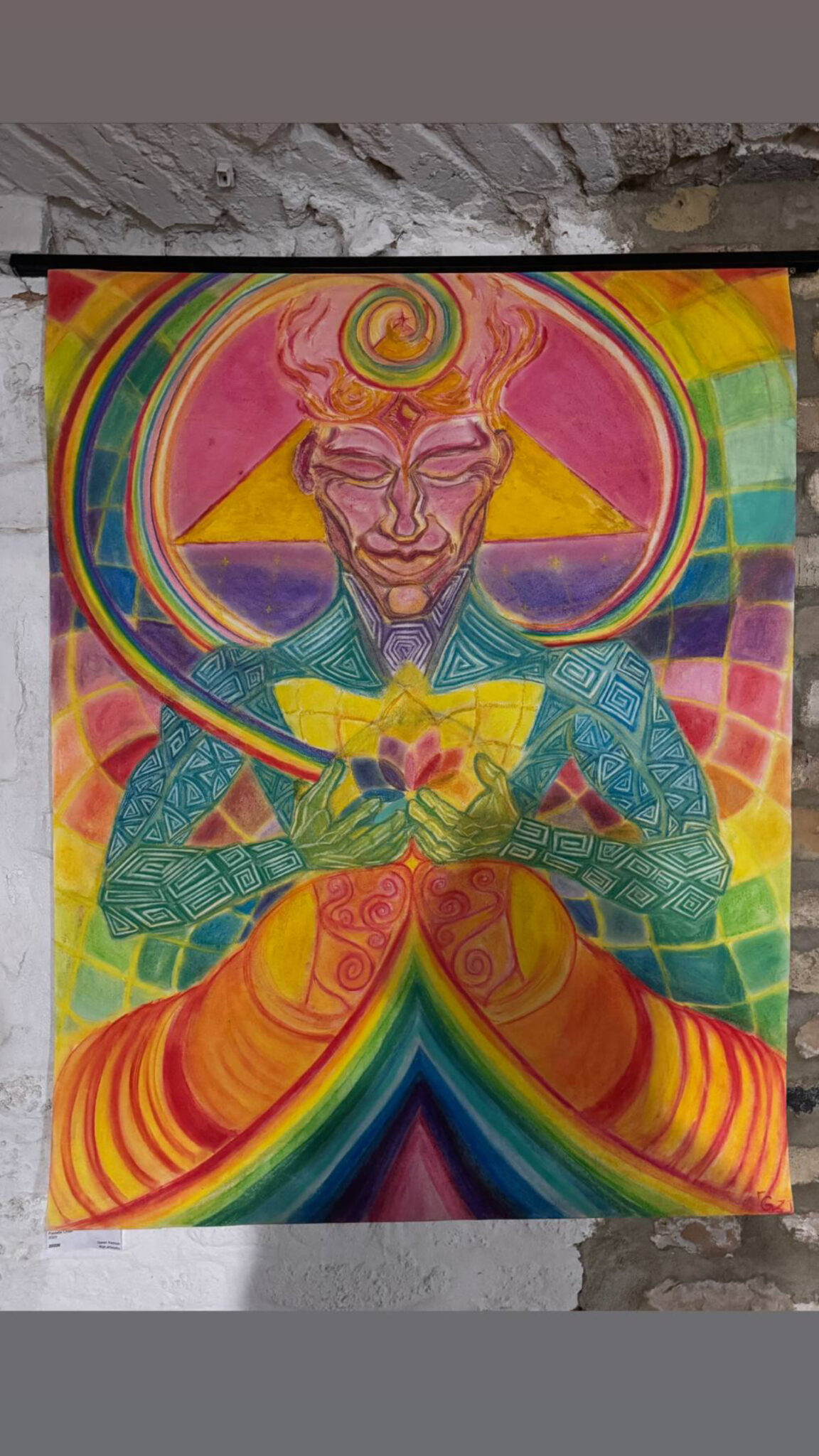
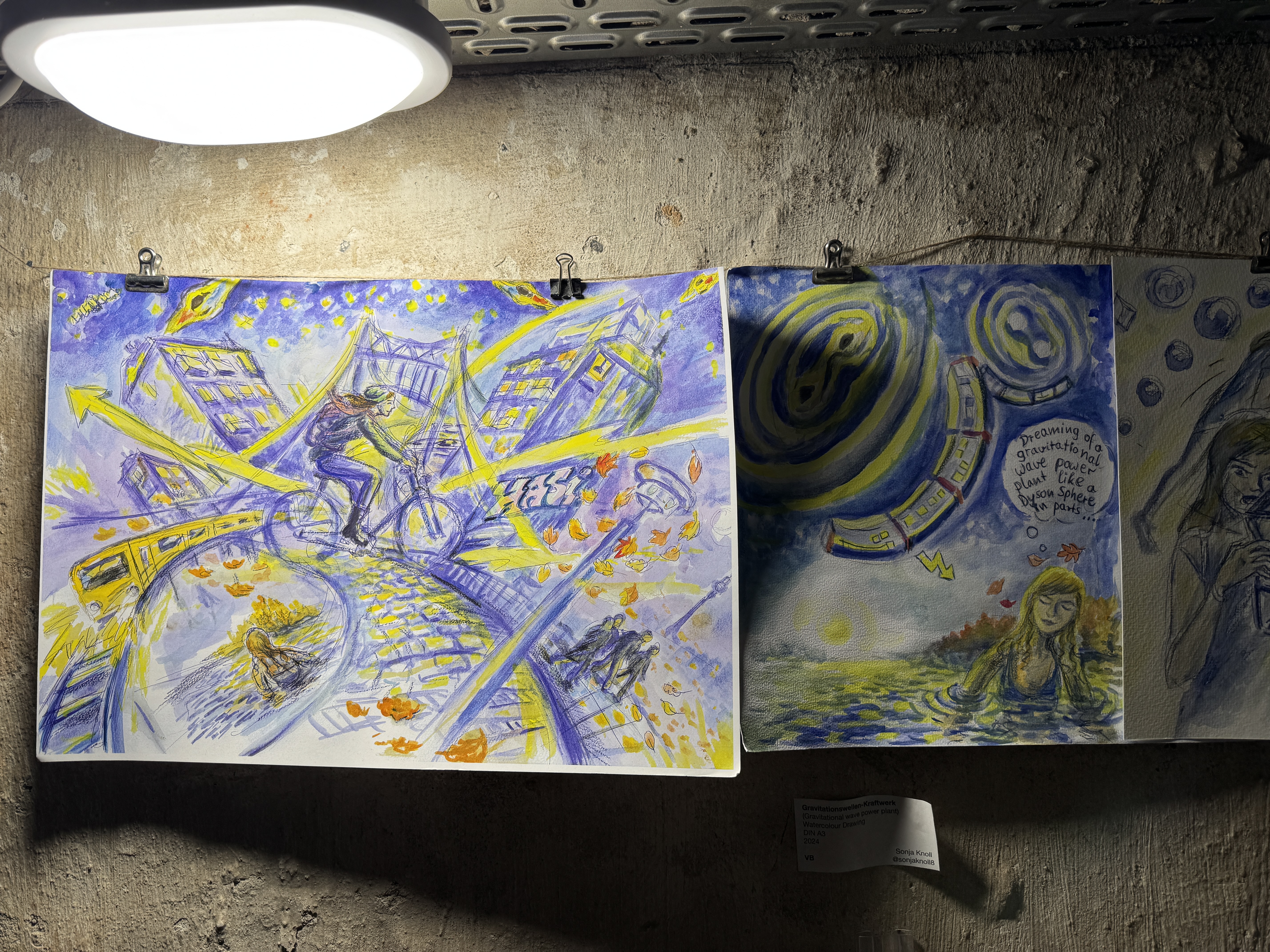
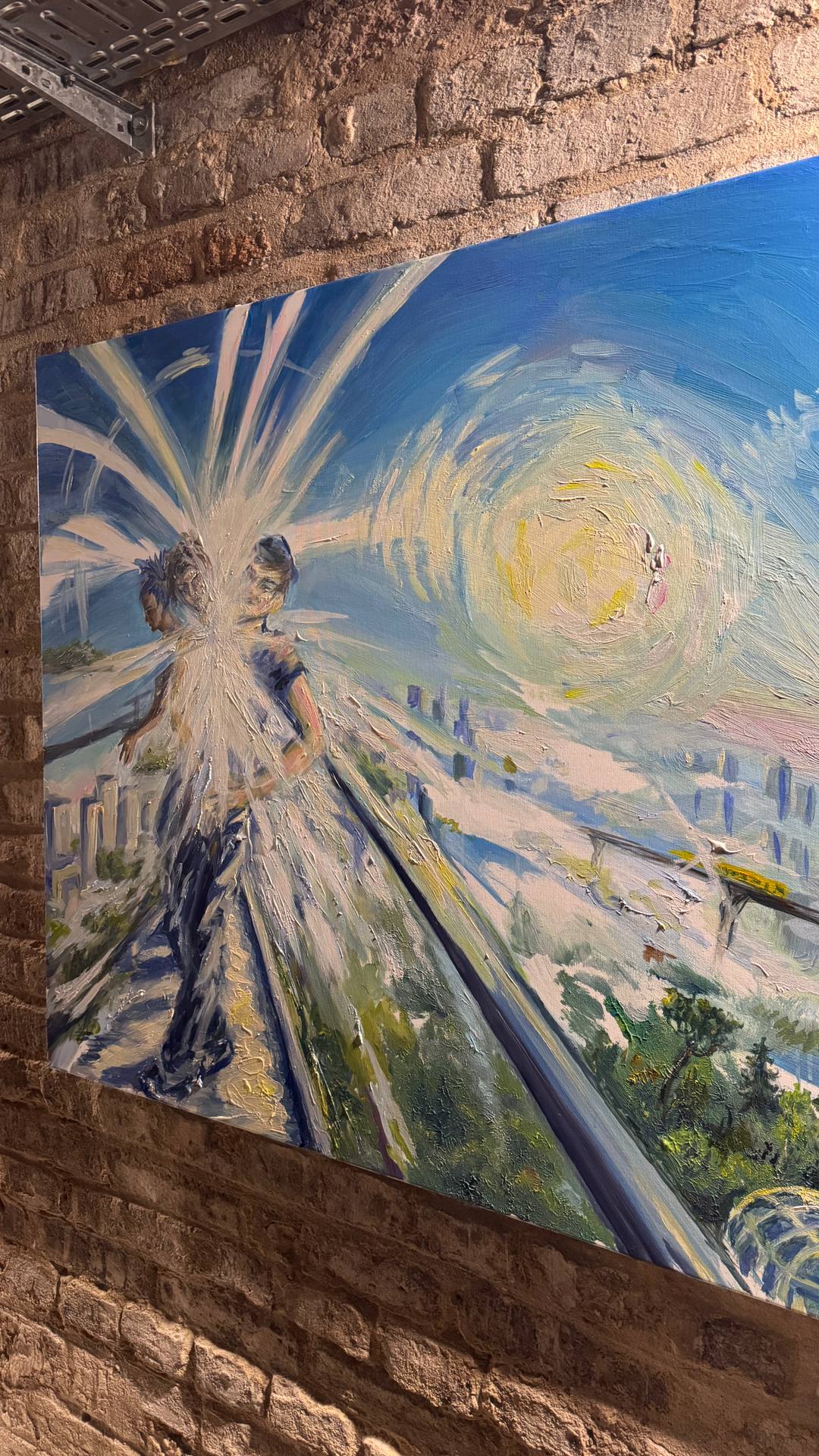
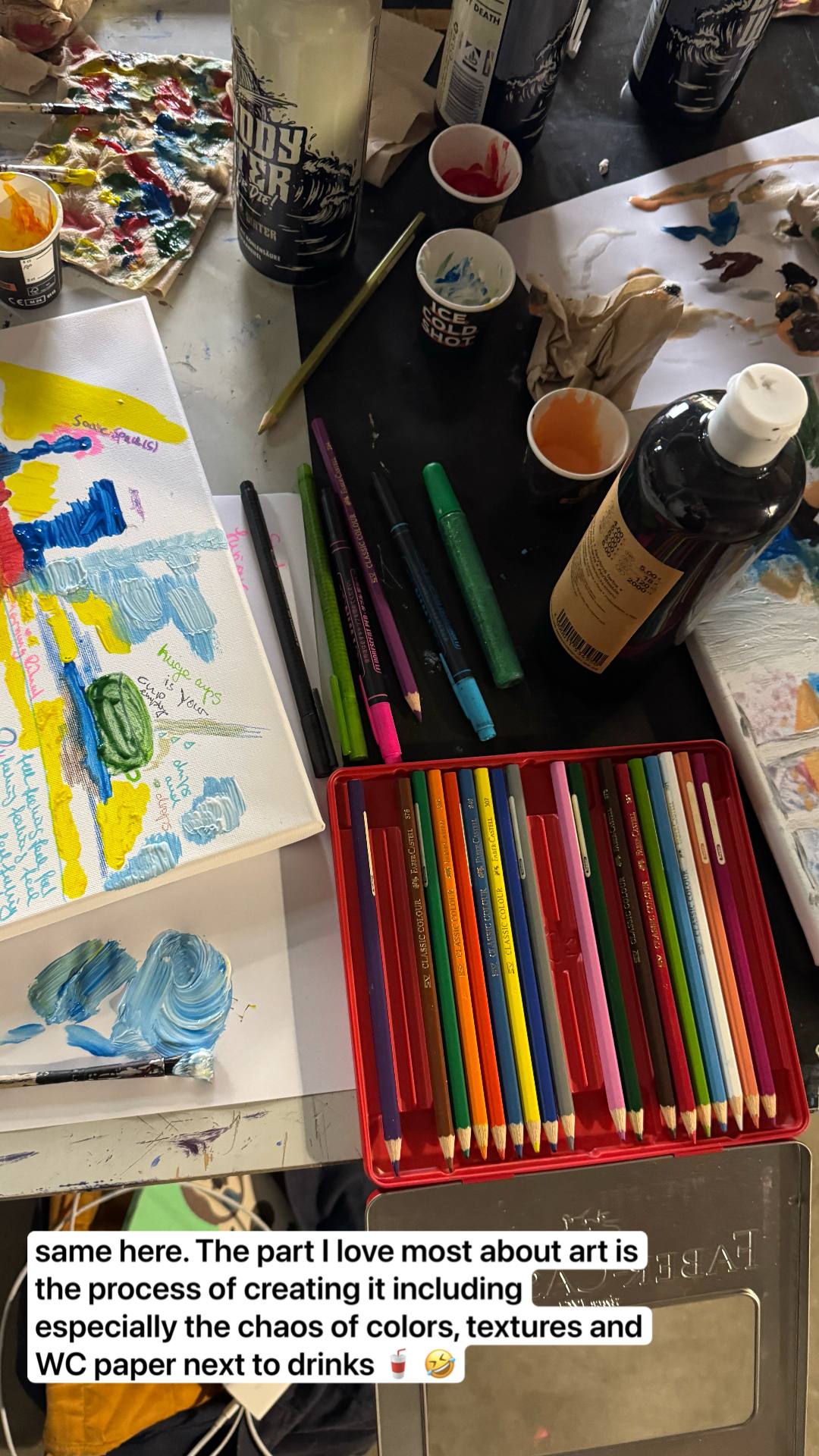
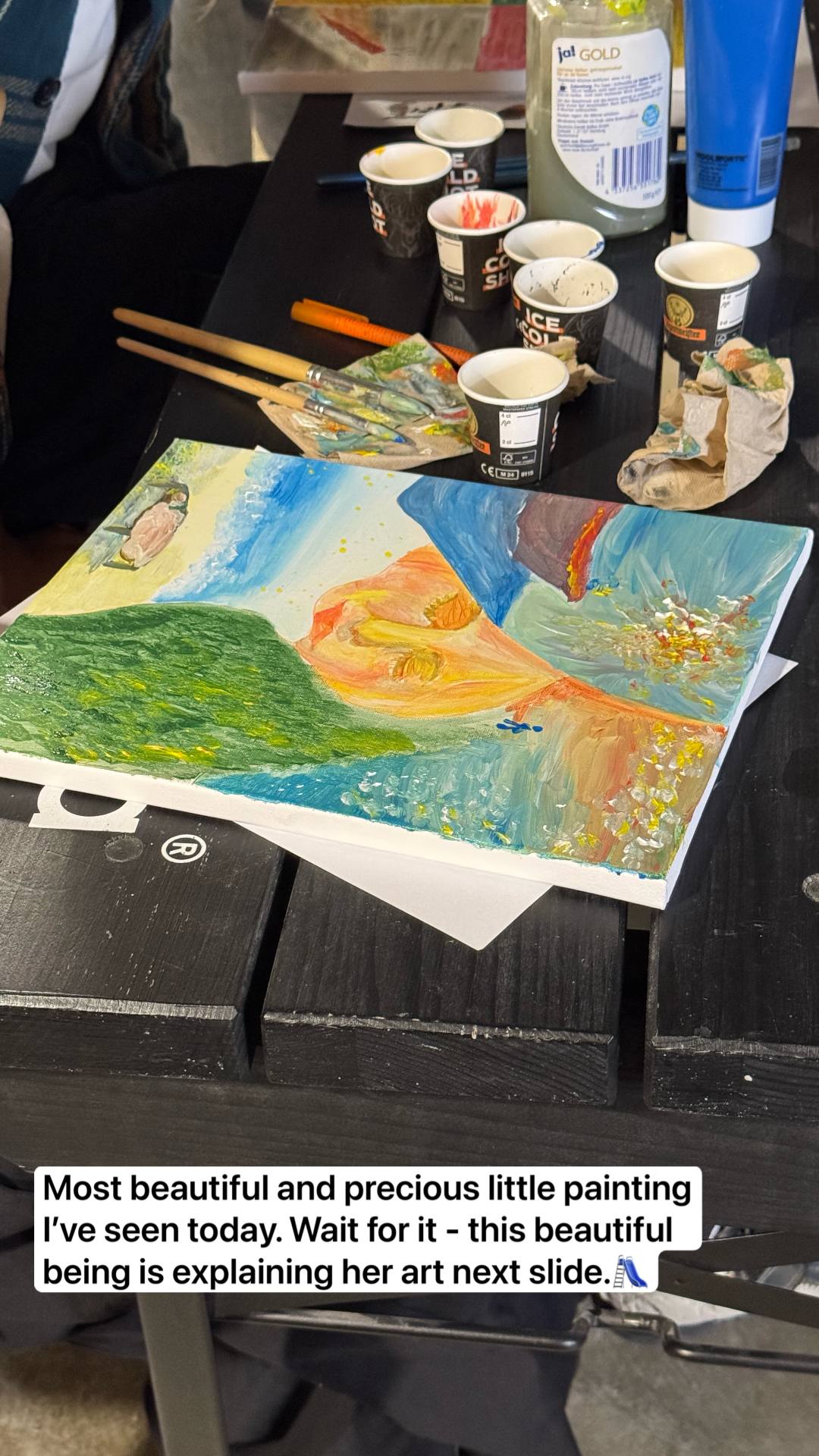
ENGLISH VERSION
-translated by AI
I stare at my self-drawn picture, deeply moved, and wonder why.
It’s neither art nor beautiful.
I hold it in my hand, gently. As if the canvas were fragile and made of glass.
I hold it in my hand, with reverence. Almost as if it were a sacred relic.
„I can’t draw,“ someone said in the drawing workshop earlier.
„Why?“ the instructor responded encouragingly, euphemistically, „you’re doing it right now.“
When we say we can’t do something, we generally mean we don’t have the TALENT for it. No talent to produce something appealing or artistic for others.
And so it is with my picture, the one I now gaze at in astonishment.
It contains much of me.
It’s brave to show something you’re not good at.
To do something you’re truly bad at.
To present it and, moreover, to enjoy it—
not necessarily the „being bad at it,“ but the process—
not necessarily the result, but what it represents.
It’s 10 PM on a Sunday night, after a long day filled with creatures, creations, and new experiments. I stand in the parking lot in front of the apartment, gathering everything I want to bring upstairs.
Among other things, this tiny canvas.
My picture from the workshop earlier.
I stare at my picture, deeply moved, and wonder why.
It’s neither art nor beautiful.
Gurdjieff, a realized master, enlightened being, great esotericist, writer, choreographer, and guru whose Sacred Dances I have attempted, speaks of „objective art.“
This is art that only an artist who has reached a certain level of consciousness can create, avoiding all subjective influences in the creation of their art.
His art then possesses „soul.“
Da Vinci is said to belong to this category.
Feelings, thoughts, and moods do not control or dominate him.
It’s about creating art that contributes to the perfection of humanity. Toomer, a great admirer of Gurdjieff, says that a high degree of self-control is necessary for this:
„One must become a human being before one can become an artist.“
Here I stand before my car, holding my highly subjective art in my hands. My attempt at becoming human.
We were to divide the canvas into four sections, with the theme and task in the bottom right: „Draw something that makes you feel alive.“
Instead of drawing something that makes me feel alive, I first play a bit with the word FEEL.
I paint it in blue on the canvas
many times
FEEL FEEL FEEL
Letters on the canvas…
feel
feeling
fell
fall
falling eventually comes.
Falling… the g then suddenly falls down, along the edge where the canvas is stretched, and there it is— the g from Falling.
The fallen g.
Bright red.
It just happened.
Wasn’t planned.
Just like the smudged F from feel, which everyone recognizes as a great artistic touch, even though I just accidentally smeared it.
I wonder how often such misunderstandings, such misinterpretations, have occurred in the history of art.
Oh, there it is again—fall. Falling.
„Today, we no longer ask, ‚What does the artist want to tell us?‘ but: ‚What does the picture do to me?'“ says Hannelore, my 75-year-old confidante and friend.
Good, because otherwise, I’d have to explain what I intended to express with my smeared baby-blue F.
My descending g will definitely be recognized as Dadaistic.
I think that’s great. Sounds great. I’ll take it.
And I’m quite proud that I’ve created something that is something.
Namely Dadaistic, which, as we know, doesn’t want to be anything.
I look at my picture and notice that whenever I paint, I immediately become six years old again, and then there are colors. Like on a psychedelic unicorn trip for children.
Then there are lots of bright colors. Then I am full of color.
I remember the evening with Juliane Burbaum and her SOUL CONCERT, which I attended a few years ago.
You sit in front of her piano, and she just looks at you for a long time.
You hold hands.
Sit opposite each other, looking into each other’s eyes…
and then… then you sit there, and she plays your song, your melody.
She feels deeply into you (and herself) because she can.
And then it sounds. Before all the other people in the hall:
Your melody. The sound of your soul.
Few things can be more private and intimate.
And when she played my melody back then, it was full of joy and color. So silly and cheerful and colorful. Like this picture here.
I look at my picture and see only bright colors. Bright colors and silly and cheerful again.
I see two little yellow ducks swimming on the big blue F from feel, because the line of the F is very thick and wide and looks like water. Like a small lake.
And of course, ducks belong on a lake!
All my little ducks. (German childrens song)
„Somewhere deep inside me, I have remained a child,“ sang Peter Maffay in his album Die Reise zur Vernunft in 1983:
Somewhere deep inside me
I have remained a child
Only when I can no longer feel it
Will I know it’s too late for me
Too late
Too late
And another question arises within me: Why do we proudly and quite naturally hang our children’s drawings on the refrigerator wall, but never our own? Why do we feel ashamed when, as adults, we can’t draw?
This drawing workshop was „deeply transformative,“ not because the instructors were great role models or masters à la Gurdjieff.
But because I DIDN’T create art. Not even subjective.
Because I DIDN’T draw. I experienced.
I didn’t produce anything—neither for others nor for myself.
Instead, I fully engaged in the process.
Not the result, but the process.
And in its entirety and fullness, with all senses and open and curious like a child.
Let us do outer things; inner things are too difficult. Gurdjieff.
Whenever I wanted to feel the paint, I dipped my fingers into the paint pot,
the tip of my right index finger deep into the cool, viscous, latex-like substance.
And watched as the blue paint slowly dripped from my fingertips.
My finger then serves as a brush; the lines on the canvas become too coarse, too large, too broad. Too much of everything. Just like me sometimes.
For the experience:
How does paint feel on the fingertip?
What does it feel like to drag the paint-finger across the canvas?
I learn that sometimes, you don’t need a guru, no role model.
And:
The result doesn’t always have to be GOOD—just right.
I borrowed this phrase and insight, to be honest.
A dear friend of mine once said this in a completely different context.
It was about the possibility that she might never achieve certain goals in life. She or I might not.
And that she now knows for herself:
„I don’t need to be finished, perfected, or to have arrived (wherever that may be). I don’t need to stress about not achieving it (in this life). As long as every step I take is harmonious, integrated, and thus ‚right.‘
And so, in a certain sense, the workshop wasn’t good, but very, very right.
My ‚inability to draw,‘ my ‚lack of talent,‘ empowered me. Because I could detach myself from the outcome.
And I was able to experience the FEEL from FEELING.
I get out of the car.
With my little (art)work in hand.
I carry it up the stairs very carefully.
Almost like a sacred relic. Precious, gentle, delicate. I handle it almost lovingly.
As if it were fragile.
It doesn’t go on the fridge wall.
It goes directly above the couch!
A small honorary place.
A little colorful eyesore that is no shame.
Another painted picture by a child.
(My) inner child.
I stare at my picture, deeply moved, and NOW I know why.
It’s neither art nor beautiful.
I hold it in my hands like something fragile and precious.
Because I am fragile and precious.
LINKS
Gurjeffs Theory of Art by Dr. Anna Challenger
Juliane Burbaum und ihrem SEELENKONZERT
Sowohl das Seelenkonzert, das Retreat (500 Euro) als auch den Zeichen-Workshop (15 Euro) habe ich selbst bezahlt und dies ist keine Werbung oder Sponsoring.
Falls Du regelmässig mehr gutes Leben lesen und hören magst, braucht es dafür finazielle Unterstützung:
Danke sagen
Unterstütze das gute Leben unter Paypal.me



